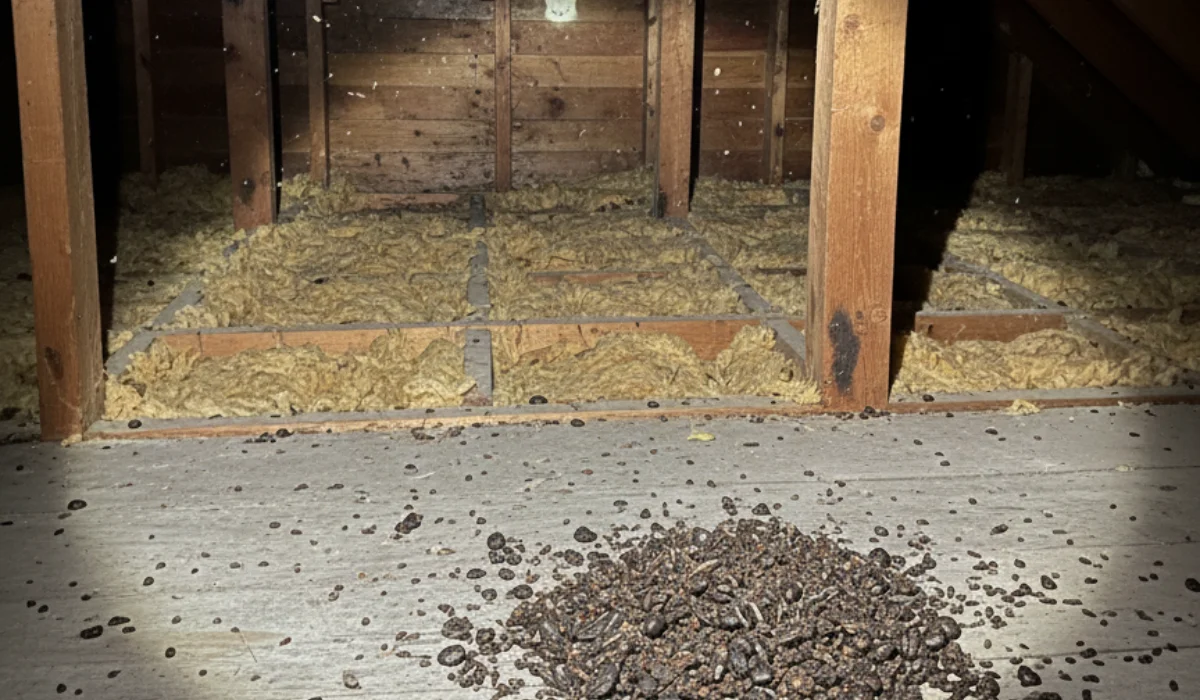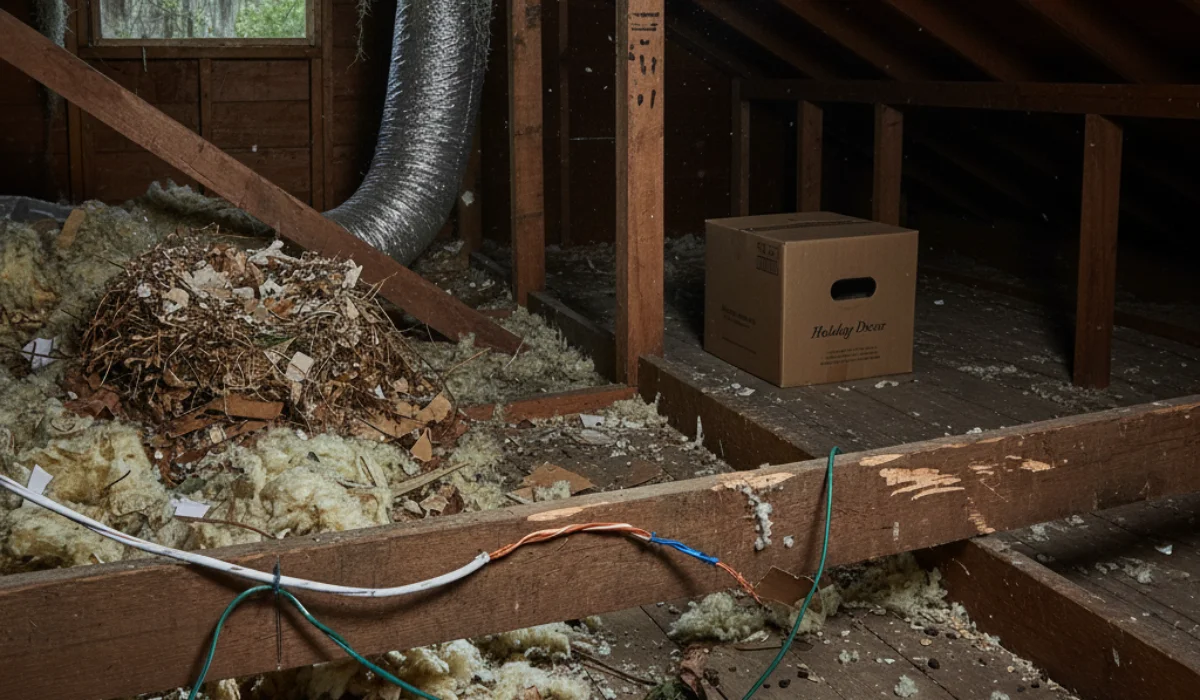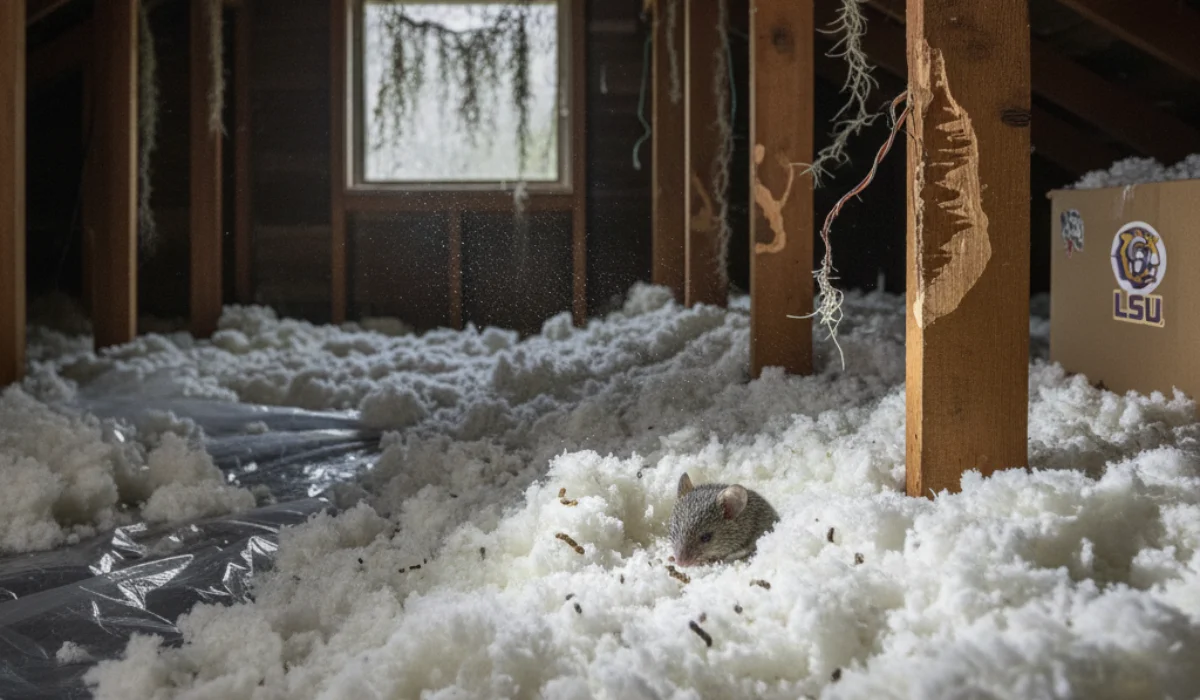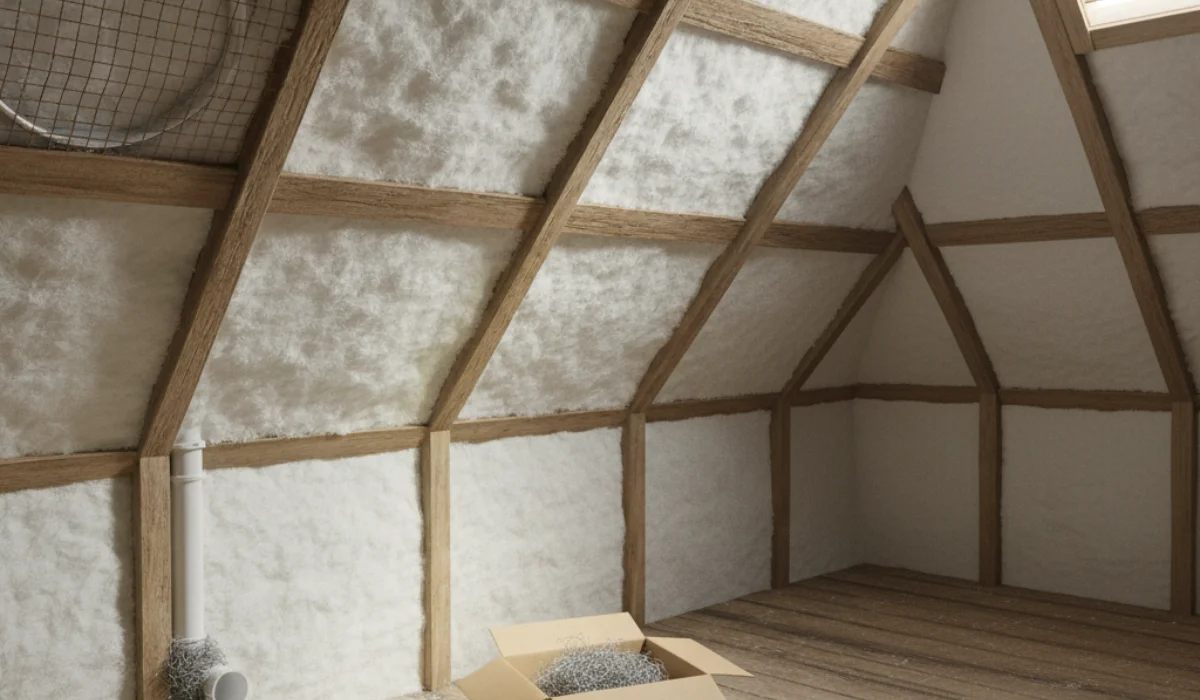If you live in New Orleans, there’s a good chance you’ve dealt with uninvited wildlife. Finding bat droppings in your attic is stressful. This waste, called guano, piles up fast when bats roost. The smell is unpleasant, and the mess often indicates a larger bat problem that requires prompt attention.
People often confuse bat poop with mouse droppings. In Louisiana’s warm weather, bats hide in attics, crawl spaces, and wall voids. Learn the signs of bat guano early to protect your home and avoid costly attic repairs.
Act early. With the proper steps and a licensed bat control team, you can resolve the issue before it poses a health risk.
Key Takeaways
• Bat droppings, or guano, look crumbly with shiny bits and pile up under roosts.
• Big piles of guano in a New Orleans attic often mean an active colony.
• DIY bat removal is risky. Use professional bat exclusion for a safe and effective solution.
• After removal, clean and restore the attic to prevent damage and health risks.
Signs of Bat Droppings in Your Attic
Finding bat droppings in your attic can be a frightening experience. Bat guano looks like mouse poop, but it breaks apart. When you crush it, you will see shiny flakes from insect wings. That detail helps you tell bat poop from mouse droppings.
Bats in Louisiana leave droppings in piles under their roost. Use a flashlight and check near cracks, chimneys, and beams. In New Orleans homes, signs of bat droppings often show up near entry points along the roofline.
Other signs include a sharp, ammonia-like odor and dark stains around attic vents. If you hear scratching or squeaking at night, you likely have an active roost, not just droppings. These are classic examples of what noise bats make.
Why Bat Droppings Are a Health Risk
Bat guano is more than a mess. In Louisiana’s humid air, piles can grow mold and release spores. Guano can spread Histoplasma, a fungus that can cause lung infection. Homeowners should also be aware of the risk of rabies from bats in Louisiana. Cleaning the attic is not just a cosmetic step; it is a significant health step.
Guano also harms insulation and wood. Many homes require attic restoration after a bat infestation, and yes, bats can damage attic insulation in Louisiana homes.
Cleaning bat guano yourself is risky. Without the right gear and training, you can spread spores into the air. Hire trained technicians for safe cleanup.
Common Signs of a Bat Infestation
Guano is a clear sign, but not the only one. Many New Orleans homeowners hear scratching in the walls or squeaks at night. Grease marks around small gaps can also show where bats squeeze in and out, while others may roost outdoors, leading homeowners to wonder how to keep bats away from porches.
A dead bat indoors is a warning sign. One bat may mean more nearby. In Slidell and Baton Rouge, bats often roost in unused chimneys and attic corners. Contact a wildlife removal team to determine if the guano is from a small spot or a larger colony.
Why DIY Bat Removal Doesn’t Work
When you find guano, DIY tips are tempting. Many people try to seal holes or spray products, but these fixes do not last. If you close entry points while bats are still inside, you can trap them. Trapped bats cause more damage and strong odors, which makes it essential to understand how bats get into your house.
Local rules protect bats during certain parts of the year, making DIY removal potentially illegal. Professional bat exclusion allows bats to exit through one-way doors and prevents them from re-entering their original habitat. This method gives long-term control.
Instead of wasting time and money on trial and error, it’s best to bring in local wildlife control experts. At LaJaunie’s Pest Control, we have experience handling bat infestations throughout southeast Louisiana, from New Orleans to Baton Rouge.
Attic Cleanup and Restoration After Bats
After the bats are gone, fix the damage. Clean the attic, remove contaminated insulation, and sanitize the space. If you skip cleanup, leftover guano still poses a risk to your health.
At LaJaunie’s, our attic restoration services in Louisiana include removing soiled insulation, disinfecting the area, and installing new insulation. Doing this helps protect your family’s health and can improve energy use. Many homes in New Orleans and Slidell see lower bills after replacing damaged insulation following a bat infestation.
Guano attracts insects, which can bring more pests. Proper attic cleanup keeps your home clean and comfortable after technicians remove the bats.
Making the Right Choice for Bat Droppings in a New Orleans Attic
Seeing bat droppings in your attic is a clear sign it’s time to act. Quick action keeps the problem from spreading and protects your home in the long run.
At LaJaunie’s Pest Control, we provide trusted bat removal services across southeast Louisiana, including New Orleans, Baton Rouge, and Slidell. Our team knows how to effectively handle local bat problems.
Contact us today to schedule an inspection and take the first step toward a safer, cleaner attic.
FAQs
What do bat droppings look like?
Bat droppings, or guano, are small, dark, and crumbly. They often contain shiny fragments from insect wings, unlike smooth rodent droppings.
Is bat guano dangerous to clean up?
Yes. Guano can spread spores that cause histoplasmosis, a serious lung infection. Always use protective gear or hire a professional pest control company.
How do I get rid of bats in my attic?
The safest way is professional bat exclusion. This process allows bats to exit through one-way doors and prevents them from returning. DIY methods often fail and may be unsafe.
 By: LaJaunie's Pest Control
By: LaJaunie's Pest Control 



